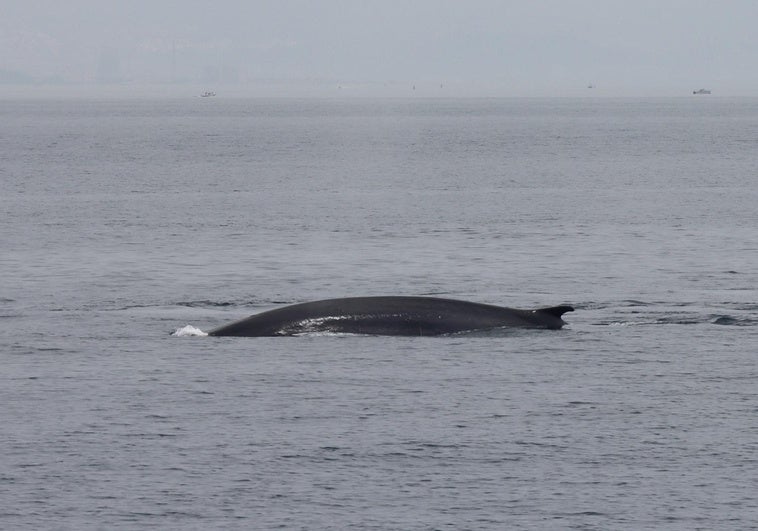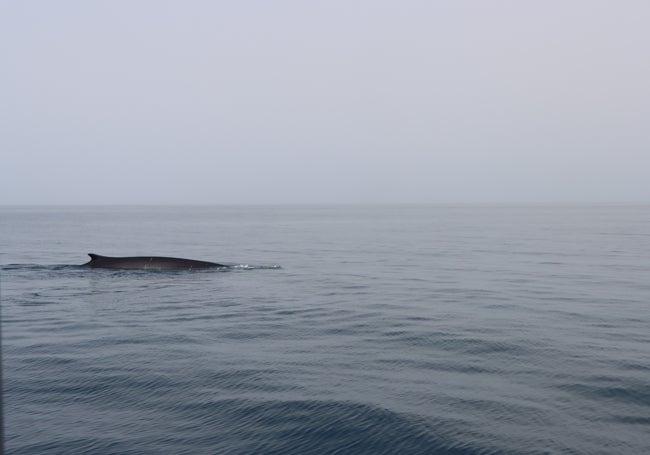
This is the moment several giant migrating fin whales were spotted off the Costa del Sol
Considered to be the second largest animal in the world, the vulnerable whale species can reach a length of up to 25 metres
For several days now, some lucky people have been able to enjoy a unique spectacle of nature in the sea off the coast of Benalmádena. Several fin whales have been spotted in this area on their way to the Atlantic from the Ligurian Sea. It is a giant whale, which can reach up to 30 metres in length and is considered to be the second largest animal in the world after the blue whale, according to the International Union for Conservation of Nature (IUCN).
"Some are even bigger than our boats," explained Verania Medina, from Costasol Cruceros, a company that operates from the Benalmádena marina and organises catamaran trips to see dolphins. "People are amazed when they see them," she explained, adding that they have been seeing groups of four or five dolphins for several days. "They are in full migration and take advantage of the current in the area, which pushes them towards the Strait of Gibraltar.
They are usually sighted more than a mile offshore, although the company's crew claim to have seen them as far as half a mile from land.

The fin whale inhabits the western Mediterranean and can measure between 18 and 25 metres long. They have a prominent dorsal fin, set far back on the body, according to the IUCN. Their blow is straight and high, "their colouring is asymmetrical, with the right half of the lower jaw white, and the right half of the head with water, with a pattern of light and dark markings. The rest of the body is grey to dark brown".
They are usually solitary animals or remain in small groups of two or three individuals, and can be found in the western and central Mediterranean, concentrating in summer in the Ligurian and Tyrrhenian Seas. The IUCN added that there are genetic differences between the Atlantic and Mediterranean fin whales, with gestation lasting one year and lactation lasting six to seven months. Females breed every two to three years and calves are around six metres long at birth. Physical maturity is reached at 25 or 30 years and the estimated longevity is 94 years, although some specimens reach 130 or 140 years.
They are filter feeders and feed on small invertebrates and occasionally fish. The fin whale is considered vulnerable according to the IUCN Red List of Threatened Species.
